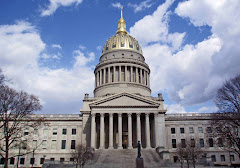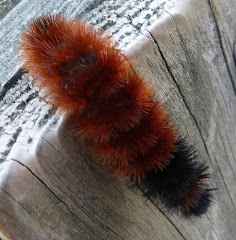Journey to a Land of Water Wind and Fire
Part D: Central Oregon
Crossing the Cascade Mountains
Finally, the time came when we had to begin our trip home. And so, early that morning we left Bend and headed west to Eugene.
We had two options open to us in terms of making the trip, Santiam Pass and McKenzie Pass. We chose the McKenzie Pass (State Route 242) option. The maps and books had warned us it was not suitable for truck traffic (a real plus to my way of thinking), and other vehicles over 38 feet in length. Since we were driving a rented “compact car” I guessed that we would fit. It was also mentioned that the road was not open in the winter, but after all this was the end of August. Plus the books had mentioned the road was a mountain road that was filled with curves, but hey, I’m from West Virginia, that sounds like home.
We left Bend on US Highway 20 and headed to Sisters. We paused in this burg very briefly (mainly looking to see if there were per chance any items of railroad interest). But the longer we stayed, the louder we heard the siren call “Tourist Trap!” And so we left.
Outside of Sisters we found our turn, with a minor amount of difficulty (remember we are old fashioned and use a paper direction finder a/k/a a map). Of course, we were hardly 2 miles down Rte 242 when . . . that’s right. . . a truck passed us. Now, it was not a big semi-tractor trailer. Nevertheless it was a big truck. We both said to each other almost simultaneously, “I thought they weren’t allowed!” Oh well, we moved on (and passed them about 1/4th of the way up the grade).
For the first part of the trip we felt like we were home in West Virginia already. And then we rounded a curve and saw something you never see in West Virginia. . . a field of lava rocks. We pulled over and got out and just looked around. There were rocks everywhere. And the road still was headed up, so we knew we were not at the pass.
And so we got in our car and drove on up through all the rocks until we did reach the pass. I already know the C.C.C. boys had built another “shelter” very similar to the one they had constructed out at the Cape Perpetua Scenic Area at McKenzie Pass. It was called the Dee Williams Shelter after a forester who had worked in the area at the time. I knew we would be able to stop there and get a better look.
A better look was definitely what we got upon reaching the turn-off at the head of the pass. We parked and A. went off to explore a trail that went out on the rocks. I, however, climbed up to the top level of the shelter to get a better perspective on all the Lava.
The Cascades have been, and will continue to be a very active, and interesting, part of the Pacific Ring of Fire. I had been to Mt. St. Helen’s and so the sight of lava all around was not new to me. Nevertheless, the sheer scope of it here at McKenzie Pass still almost overwhelmed me. Everywhere I looked, all I saw was black rock and sharp peaks.
Now standing here looking at the lava, and the string of volcanic peaks (for the record, the first one you saw was Belknap Volcanic Shield, followed by Mt. Washington and then followed by Mt. Jefferson) and surrounded by all this black lava, I knew for sure this one thing. Above all else, we had been traveling through a Land of Fire.









 estimate it was probably as tall as a 4 or 5 story building above the floor of the Newberry Caldera. As I paused to look at it (that is Paulina Peak, our previous stop, in the background), I marveled. Then when I read some of the interpretative signs
estimate it was probably as tall as a 4 or 5 story building above the floor of the Newberry Caldera. As I paused to look at it (that is Paulina Peak, our previous stop, in the background), I marveled. Then when I read some of the interpretative signs 



































